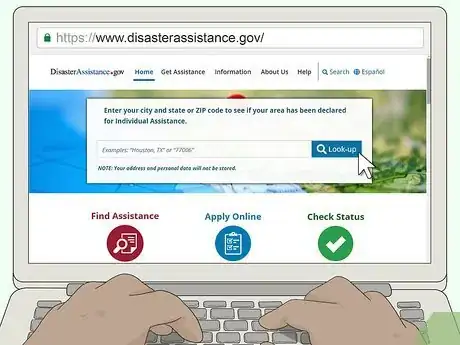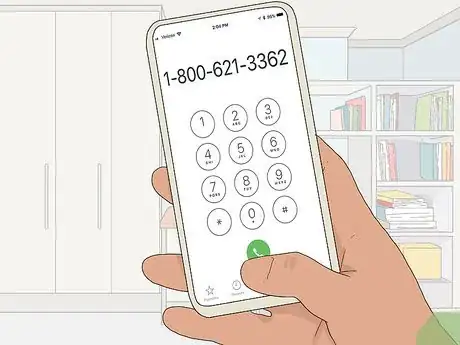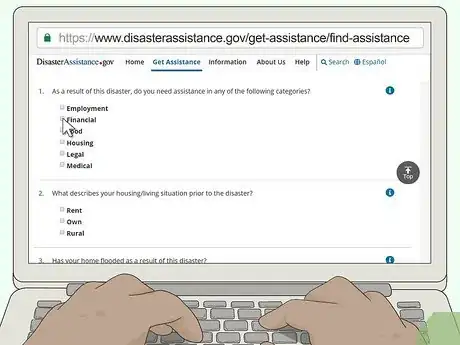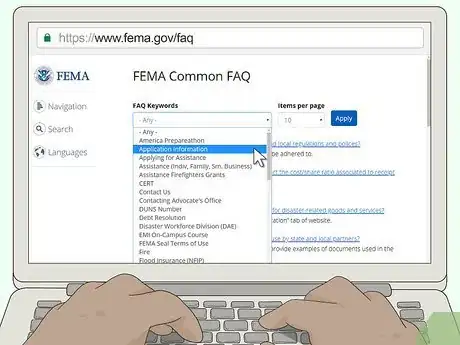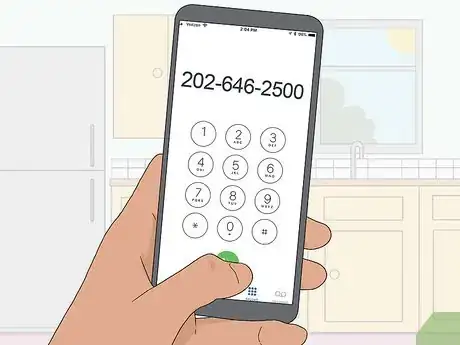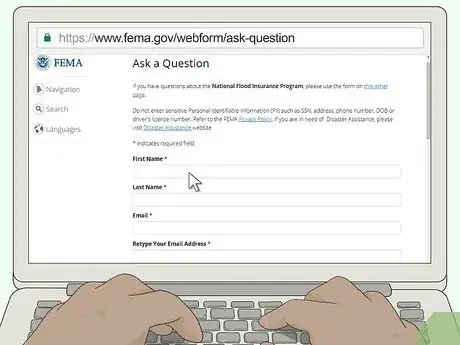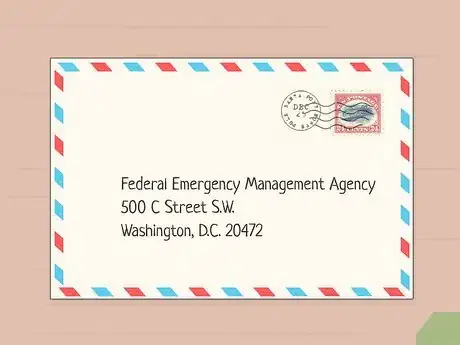This article was co-authored by wikiHow Staff. Our trained team of editors and researchers validate articles for accuracy and comprehensiveness. wikiHow's Content Management Team carefully monitors the work from our editorial staff to ensure that each article is backed by trusted research and meets our high quality standards.
This article has been viewed 4,271 times.
Learn more...
FEMA, the Federal Emergency Management Agency, is the US agency responsible for coordinating disaster relief efforts hurricanes or similar disasters. If you’ve suffered any hardship, FEMA may be able to help you. Contact the agency’s disaster relief numbers to apply for reimbursement or other assistance you may need. This aid can help you get back on your feet. You can also make general inquiries in non-emergency situations by contacting the agency directly.
Steps
Seeking Emergency Relief
-
1Check online to see if your area is eligible for emergency assistance. FEMA only provides assistance in places that have been declared as disaster areas. To find out if a recent emergency in your area has been declared for emergency assistance, go to FEMA’s disaster relief page and type in your home address.[1]
- To enter your information, visit https://www.disasterassistance.gov/.
- Even if FEMA hasn’t been called in, your state may have declared a state of emergency and is providing help. Check with your state’s website.
-
2Call FEMA’s disaster assistance number if you need help immediately. If your area is cleared for FEMA assistance, then contact the agency for assistance in getting help. For a quick response, call FEMA’s disaster assistance number. Representatives there can connect you with the correct people to help you.[2]
- The disaster relief number is (800) 621-FEMA (3362).
Advertisement -
3Fill out FEMA’s online disaster relief form to apply for assistance. Navigate to FEMA’s disaster relief page and fill out the forms to officially request assistance. Answer the questions about what type of help you need, including food, medical, financial, shelter, or legal. Provide the requested details about your living situation and the damage you’ve suffered. Fill everything out as accurately as possible.[3]
- Apply for assistance at https://www.disasterassistance.gov/get-assistance/find-assistance.
- Filling out the online form is best if you don’t need emergency help. Contact 911 if you need help immediately.
-
4Visit a local disaster recovery center if FEMA has set one up near you. If a disaster was especially bad, FEMA will set up recovery centers to provide food, medical attention, and shelter to affected people. If you need immediate help, then go to a center that’s been set up in your area. These centers can provide advice and guidance on applying for relief.[4]
- To find a center, type your city or zip code into https://egateway.fema.gov/ESF6/DRCLocator.
- You can also find the location of a relief center by calling the disaster relief number.
- FEMA's mobile app displays recovery center locations. Download it for a list of locations and updates on the emergency situation.[5]
Applying for Disaster Reimbursement
-
1Contact your home insurance company before registering with FEMA. FEMA only reimburses property damage that isn't covered by your insurance, so contact your insurer first to get a quote. After speaking with your insurer, then contact FEMA through their disaster relief phone number or website to file a claim.
- If you don’t have insurance, then contact FEMA right away.
-
2Describe the kind of relief you need to a FEMA representative. Clearly state all of the damage your home sustained and what your needs are. FEMA can reimburse the cost of the damages, the personal property loss, temporary housing, and medical care.
- If FEMA asks for more information not listed here, provide that as well. Cooperating will make the process go by faster.
- FEMA will speak with your insurance company to find out what the company is covering and isn’t covering. If your insurance company already provided you with a quote, you can give FEMA the specifics.
-
3Provide stable contact information so FEMA can reach you. Provide the address of the damaged property, the names of everyone living in the home, your Social Security and insurance information, and your phone number. Be sure to give contact information that won't change. If FEMA can't contact you, your claim might be abandoned.
- If your home is too damaged to stay in, give FEMA the address where you’re staying or provide a relative’s address so they can send you mail.
-
4Give FEMA your bank information to receive funds electronically. If FEMA approves your claim, then you have the option of receiving the funds with a direct deposit. In this case, give FEMA your bank account number, routing number, and account type (checking or savings).
- If you don’t want to give FEMA your bank information, then you’ll get a check in the mail instead.
-
5Check the status of your application on FEMA’s website. Once you’ve submitted your application, it will take some time to process. To check on its status, create an account on FEMA’s disaster relief site and type in the application number that FEMA gave you.
- FEMA reports that it usually approves applications and provides funds within 10 days.
Making General Inquiries
-
1Consult FEMA’s FAQ page to see if your inquiry is addressed there. FEMA receives a lot of important inquiries, so they want to keep their official communication channels as clear as possible. If you’re not experiencing an emergency, they request that you first check their FAQ page and see if your inquiry is addressed there. If not, then go on with contacting them directly.[6]
- For the FAQ page, visit https://www.fema.gov/faq.
-
2Call (202) 646-2500 to reach FEMA’s central office. If you can’t find an answer to your question on the FAQ page, then calling the agency directly is your best choice for a fast answer. Call their central office to try and get connected with the right person to answer your question.[7]
- Keep in mind that FEMA is a big organization, so you might get transferred a few times until you find the right person to talk to.
- Try to be patient and explain what you’re looking for as clearly as possible. For example, tell the operator that you want to know the evacuation plan for your city.
-
3Submit a question electronically through FEMA’s website. If you prefer to email a non-urgent question, you can submit a question through the FEMA website. Navigate to the contact page and fill out the required information. Provide your name, email address, and state in the boxes provided. Then, select a topic and type your question.[8]
- Fill out the email questionnaire at https://www.fema.gov/webform/ask-question.
- Make your inquiry as specific as you can and be sure to choose an accurate topic. For example, if you’re asking about flood insurance, don’t select “Storm Tornado Shelters.” This will make the response slower.
- The contact box is not secured, so don’t enter sensitive information like your Social Security number.
-
4Write to FEMA’s office in Washington, DC if you prefer paper mail. Sometimes sending a letter gets more attention, because phone lines and email servers can get overloaded. If you prefer sending a letter, write a specific question or comment and mail it to FEMA’s central office. FEMA’s mailing address is:
Federal Emergency Management Agency
500 C Street S.W.
Washington, D.C. 20472[9]- Address the letter to FEMA, unless you know the specific person you’re trying to reach.
- Provide your phone number with the letter as well. FEMA representatives may prefer to call you back to make the response faster.
-
5Contact your regional office for inquiries about flood mapping. FEMA has 10 regional offices that cover all of the United States. The regional offices primarily handle inquiries about flood mapping and zones. If this is what your question is about, then find the information for your FEMA regional office and call, email, or write them there with your inquiry.[10]
- Find your regional office by visiting https://www.fema.gov/regional-contact-information.
- Alternatively, you could click on your state at https://www.fema.gov/fema-regional-office-contact-information.
Warnings
- If there is an immediate emergency, contact 911 or your local emergency number for help. FEMA usually only responds after disasters occur.⧼thumbs_response⧽
References
- ↑ https://www.disasterassistance.gov/
- ↑ https://www.fema.gov/contact-us
- ↑ https://www.disasterassistance.gov/get-assistance/find-assistance
- ↑ https://www.fema.gov/contact-us
- ↑ https://www.fema.gov/mobile-app
- ↑ https://www.fema.gov/contact-us
- ↑ https://www.fema.gov/contact-us
- ↑ https://www.fema.gov/webform/ask-question
- ↑ https://www.fema.gov/contact-us
